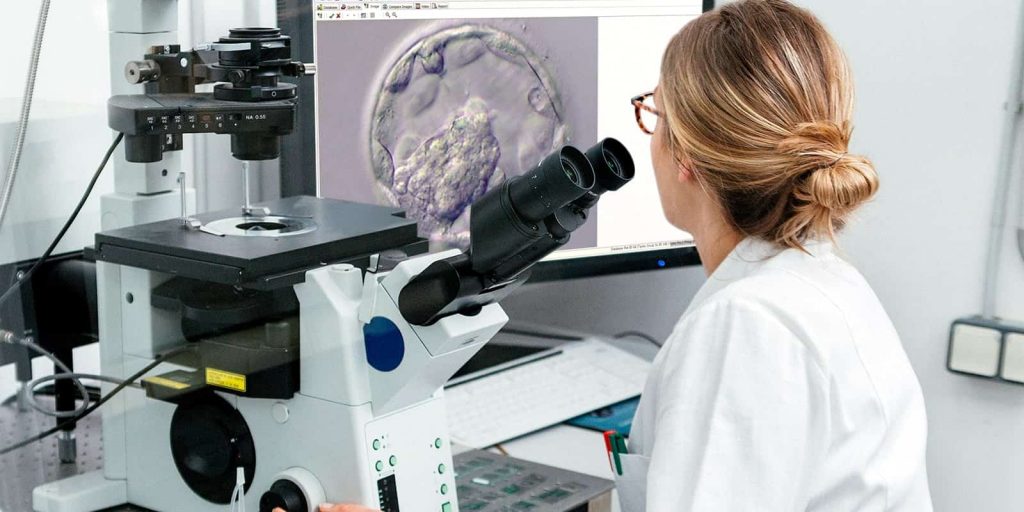Welcome to MedFertility.com, your trusted source for comprehensive information on fertility treatments. Today, we delve into the topic of Laser Assisted Hatching Cost in Ghana, shedding light on this advanced reproductive technology and its associated expenses.
Laser Assisted Hatching (LAH) is a specialized procedure used in assisted reproductive techniques, aimed at enhancing the chances of embryo implantation during IVF treatment. By creating a small opening in the outer shell of the embryo, known as the zona pellucida, LAH facilitates the embryo’s ability to hatch and implant into the uterine lining, ultimately increasing the likelihood of a successful pregnancy.
The Cost of Laser Assisted Hatching in Ghana, can vary depending on several factors, including the fertility clinic, the expertise of the medical team, the complexity of the procedure, and any additional services included in the treatment package. Understanding the cost of LAH is crucial for individuals or couples considering fertility treatment options in Ghana, as it allows for informed decision-making and financial planning.
Stay with us as we explore the intricacies of Laser Assisted Hatching and provide insights into the cost considerations associated with this innovative fertility treatment in Ghana.
What is Laser Assisted Hatching?
Laser Assisted Hatching (LAH) is a sophisticated assisted reproductive technology (ART) procedure used during in vitro fertilization (IVF) treatments. It involves the precise application of a laser to create a small opening or thinning in the outer shell (zona pellucida) of the embryo before it is transferred into the uterus. This technique aims to facilitate the embryo’s hatching or emergence from its protective shell, thereby increasing the chances of successful implantation in the uterine lining.
Procedure of Laser Assisted Hatching
Laser Assisted Hatching is a procedure where a small hole is created in the outer shell of the embryo using a laser to aid in implantation during IVF.
Pre-Treatment Evaluation
Before undergoing laser-assisted hatching (LAH), patients undergo a comprehensive pre-treatment evaluation. This evaluation includes a detailed medical history assessment, physical examination, and diagnostic tests to assess fertility potential. These tests may include blood tests to evaluate hormone levels, imaging studies such as ultrasounds to assess ovarian reserve and uterine health, and other specialized tests as determined by the fertility specialist. The pre-treatment evaluation helps the medical team customize the treatment plan to address the specific needs and circumstances of each patient.
Ovarian Stimulation and Egg Retrieval
Following the pre-treatment evaluation, patients undergo ovarian stimulation to encourage the development of multiple follicles and eggs. This involves the administration of hormonal medications, typically through injections, to stimulate the ovaries. During this time, patients are closely monitored through blood tests and ultrasound scans to track follicle growth and hormone levels. Once the follicles reach optimal maturity, a trigger shot is administered to induce final maturation of the eggs. Approximately 36 hours later, egg retrieval is performed under sedation or anesthesia. Using transvaginal ultrasound guidance, a thin needle is inserted into the ovaries to aspirate the follicles and retrieve the eggs.
Fertilization and Embryo Culture
Following egg retrieval, the retrieved eggs are immediately taken to the laboratory, where they are fertilized with sperm using conventional IVF or intracytoplasmic sperm injection (ICSI). The fertilized eggs, now embryos, are then cultured in a controlled environment for several days, typically five to six days, during which they undergo cell division and development. The embryologists monitor the embryos closely to assess their quality and progression, aiming to select the healthiest embryos for transfer.
Laser Assisted Hatching Process
Laser-assisted hatching (LAH) is performed on embryos before they are transferred into the uterus. This delicate procedure involves using a laser to create a small opening or thinning in the zona pellucida, the outer shell of the embryo. By creating this opening, LAH aims to facilitate the embryo’s ability to hatch from its protective shell and implant into the uterine lining. The laser allows for precise control and minimal trauma to the embryo, improving the chances of successful implantation.
Embryo Transfer
Once the embryos have undergone laser-assisted hatching (LAH), they are ready for transfer into the woman’s uterus. Embryo transfer is typically performed three to five days after fertilization, depending on the stage of embryo development and the individual’s treatment plan. During the procedure, a thin catheter containing the embryos is inserted through the cervix and into the uterus under ultrasound guidance. The embryos are gently released into the uterine cavity, where they will hopefully implant and develop into a pregnancy. Following the transfer, patients may be prescribed medications to support the uterine lining and embryo implantation.
Mechanism of Action
During natural conception, embryos undergo a process called hatching, where they break free from the zona pellucida before implanting into the uterine lining. In some cases, the zona pellucida may be abnormally thick or hardened, making it difficult for the embryo to hatch and implant. Laser Assisted Hatching works by precisely targeting and thinning a small portion of the zona pellucida using a focused laser beam. This controlled weakening of the shell allows the embryo to hatch more easily, enhancing its ability to implant and establish pregnancy.
Indications for LAH
Laser Assisted Hatching may be recommended for couples undergoing IVF treatment who have experienced previous implantation failures or have specific risk factors that may affect embryo implantation. Indications for LAH include:
- Advanced maternal age: Women over the age of 35 may have thicker zona pellucida, reducing the embryo’s ability to hatch and implant.
- Elevated basal follicle-stimulating hormone (FSH) levels: High FSH levels can indicate decreased ovarian reserve and may be associated with poor embryo quality and implantation.
- Previous IVF failures: Couples who have undergone multiple unsuccessful IVF cycles despite transferring good-quality embryos may benefit from LAH to improve implantation rates.
- Frozen embryo transfers: LAH can enhance the implantation potential of frozen-thawed embryos by facilitating their hatching process before transfer.
Benefits of Laser Assisted Hatching
Laser Assisted Hatching offers several potential benefits for couples undergoing IVF treatment:
- Improved embryo implantation: By creating a precise opening in the zona pellucida, LAH enhances the embryo’s ability to hatch and implant into the uterine lining, leading to higher implantation rates and improved pregnancy outcomes.
- Increased pregnancy rates: Studies have shown that LAH may be particularly beneficial for certain patient populations, such as women of advanced maternal age or those with previous IVF failures, resulting in higher pregnancy rates compared to standard IVF procedures.
- Enhanced embryo selection: LAH allows embryologists to identify embryos with the greatest potential for implantation by assessing their ability to hatch in vitro. This selective approach can optimize embryo selection and improve the overall success of IVF treatment.
- Safe and minimally invasive: Laser Assisted Hatching is a safe and minimally invasive procedure performed as part of the IVF process. The use of a laser ensures precise control and minimal risk of damage to the embryo, making it a well-tolerated and effective adjunct to IVF treatment.
Average Laser Assisted Hatching Cost in Ghana
The Average Cost of laser-assisted hatching in Ghana typically ranges from $800 to $1,500 USD per cycle. This cost may vary depending on several factors, including the clinic’s location, the expertise of the medical team, the specific techniques used, and any additional services included in the treatment package. Additionally, patients may incur additional expenses for pre-treatment evaluations, medications, diagnostic tests, and follow-up care. It’s essential for patients to inquire about the comprehensive cost of LAH treatment and any potential additional fees to ensure transparency and avoid unexpected financial burdens. While the Cost of LAH treatment in Ghana may be a significant investment, many patients find that the potential benefits, including increased chances of successful embryo implantation and pregnancy, justify the expense.
Factors Influencing the Success of Laser Assisted Hatching
The Success of Laser Assisted Hatching depends on factors such as embryo quality, the expertise of the embryologist, the precision of the laser technique, and the thickness of the zona pellucida.
Age of the Woman
The age of the woman is a significant factor influencing the success of laser-assisted hatching (LAH). Younger women tend to have higher success rates as they typically produce healthier eggs with a lower incidence of chromosomal abnormalities. Advanced maternal age, typically defined as 35 years and older, is associated with a decline in egg quality and an increased risk of embryo implantation failure. Therefore, women of advanced maternal age may benefit from LAH to improve their chances of successful embryo implantation and pregnancy.
Quality of Embryos
The quality of embryos plays a crucial role in the success of laser-assisted hatching (LAH). High-quality embryos, characterized by normal morphology, appropriate cell division, and developmental stage, have a higher likelihood of implantation and subsequent pregnancy. Embryos with poor quality, such as those with irregular morphology or slower development, may have reduced implantation potential even with LAH. Therefore, the selection of high-quality embryos for LAH is essential to optimize treatment outcomes.
Previous IVF Failures
Patients who have experienced previous IVF failures may benefit from laser-assisted hatching (LAH) to improve their chances of success in subsequent cycles. Past IVF disappointments might be credited to different elements, including incipient organism quality, uterine receptivity, and the presence of chromosomal irregularities. LAH can assist with beating specific obstructions to implantation by working with incipient organism incubating and upgrading the cooperation between the undeveloped organism and the uterine coating. By addressing these potential barriers, LAH may increase the likelihood of successful implantation and pregnancy in patients with a history of IVF failures.
Underlying Causes of Infertility
Underlying causes of infertility, such as diminished ovarian reserve, endometriosis, polycystic ovary syndrome (PCOS), or male factor infertility, can influence the success of laser-assisted hatching (LAH). Patients with specific infertility diagnoses may have unique challenges affecting embryo implantation and pregnancy success. LAH can be especially gainful for patients with specific circumstances, like ladies with cutting edge maternal age or those with a background marked by repetitive implantation disappointment. By addressing specific barriers to implantation associated with underlying infertility factors, LAH may improve treatment outcomes and increase the chances of achieving a successful pregnancy.
Choosing a Fertility Clinic for Laser Assisted Hatching in Ghana
When selecting a fertility clinic for Laser Assisted Hatching in Ghana, consider factors like the clinic’s expertise, success rates, available technology, and patient-centered care. Comprehensive research ensures a tailored approach to your fertility journey.
A. Reputation and Success Rates
When selecting a fertility clinic for laser-assisted hatching (LAH) in Ghana, it’s essential to consider the clinic’s reputation and success rates. Look for clinics with a proven track record of success in performing LAH procedures and achieving positive outcomes for patients. Research patient reviews, testimonials, and success stories to gauge the clinic’s reputation and the satisfaction levels of former patients. A clinic with a strong reputation and high success rates is more likely to provide quality care and deliver favorable treatment outcomes.
B. Expertise of the Medical Team
The expertise of the medical team is a crucial factor in choosing a fertility clinic for LAH in Ghana. Ensure that the clinic’s medical team consists of experienced fertility specialists, embryologists, and support staff with specialized training in assisted reproductive technologies. Verify the qualifications, credentials, and experience of the medical professionals involved in performing LAH procedures. A skilled and knowledgeable medical team is better equipped to handle complex cases, optimize treatment protocols, and provide personalized care to patients undergoing LAH treatment.
C. Facility Infrastructure and Technology
Evaluate the facility infrastructure and technology available at the fertility clinic for LAH procedures. Choose a clinic equipped with state-of-the-art laboratory facilities, advanced diagnostic equipment, and cutting-edge technology for performing LAH with precision and accuracy. State-of-the-art facilities ensure optimal conditions for embryo culture, laser-assisted hatching, and embryo transfer, contributing to the success of the treatment. Additionally, assess the clinic’s adherence to quality assurance standards and regulatory guidelines to ensure safe and effective fertility treatment.
D. Patient-Centric Care and Support Services
Opt for a fertility clinic in Ghana that prioritizes patient-centric care and provides comprehensive support services throughout the treatment process. Look for clinics that offer personalized treatment plans, individualized care, and emotional support to patients undergoing LAH treatment. Consider factors such as accessibility, communication channels, and the availability of counseling services, support groups, and educational resources for patients. A clinic that values patient comfort, convenience, and well-being fosters a positive treatment experience and enhances the overall journey towards achieving pregnancy through laser-assisted hatching.
Conclusion
In conclusion, Laser Assisted Hatching holds promise as a valuable adjunct to conventional IVF procedures, offering hope to couples struggling with infertility. Understanding the procedure, associated costs, and factors influencing success is essential for informed decision-making. At MedFertility, we are committed to providing comprehensive information and support to individuals seeking fertility treatment in Ghana. Contact us today to learn more about Laser Assisted Hatching and embark on your journey towards parenthood.
Frequently Asked Questions (FAQs)
Q1. What is the success rate of Laser Assisted Hatching in Ghana?
Ans:- The success rate of Laser Assisted Hatching in Ghana can vary depending on factors such as the patient’s age, underlying fertility issues, and the expertise of the medical team. It is best to consult with a fertility specialist for personalized information on success rates.
Q2. How do I choose the best fertility clinic for LAH in Ghana?
Ans:- To choose the best fertility clinic for LAH in Ghana, consider factors such as the clinic’s reputation, success rates, expertise of the medical team, facility infrastructure, patient-centric care, and support services. Research patient reviews and testimonials for insights into former patients’ experiences.
Q3. Are there any financing options available for fertility treatments in Ghana?
Ans:- Yes, some fertility clinics in Ghana offer financing options for fertility treatments, including Laser Assisted Hatching. These options may include payment plans, financing programs, or partnerships with financial institutions to help make treatment more affordable for patients.
Q4. What factors can affect the cost of Laser Assisted Hatching?
Ans:- Several factors can affect the cost of Laser Assisted Hatching in Ghana, including the clinic’s location, reputation, expertise of the medical team, facility infrastructure, the complexity of the procedure, and any additional services or medications required. It is advisable to inquire about the specific cost breakdown and payment options with the chosen fertility clinic.
Q5. How long does the Laser Assisted Hatching procedure take?
Ans:- The Laser Assisted Hatching procedure typically takes only a few minutes to perform. It is a minimally invasive procedure that is often done as part of the IVF treatment process, usually before embryo transfer.
Q6. What should I expect during the Laser Assisted Hatching process?
Ans:- During the Laser Assisted Hatching process, patients can expect to undergo a brief procedure where a small opening is created in the outer shell of the embryo using a laser. This is performed in the laboratory before the embryo is transferred into the uterus as part of the IVF procedure.
Q7. Can I undergo Laser Assisted Hatching if I have had previous IVF failures?
Ans:- Yes, individuals who have experienced previous IVF failures may still be candidates for Laser Assisted Hatching. It can be beneficial for patients who have experienced implantation failure in previous IVF cycles, as it may improve the chances of successful embryo implantation and pregnancy. However, the decision to undergo LAH should be made in consultation with a fertility specialist based on individual circumstances and treatment history.












